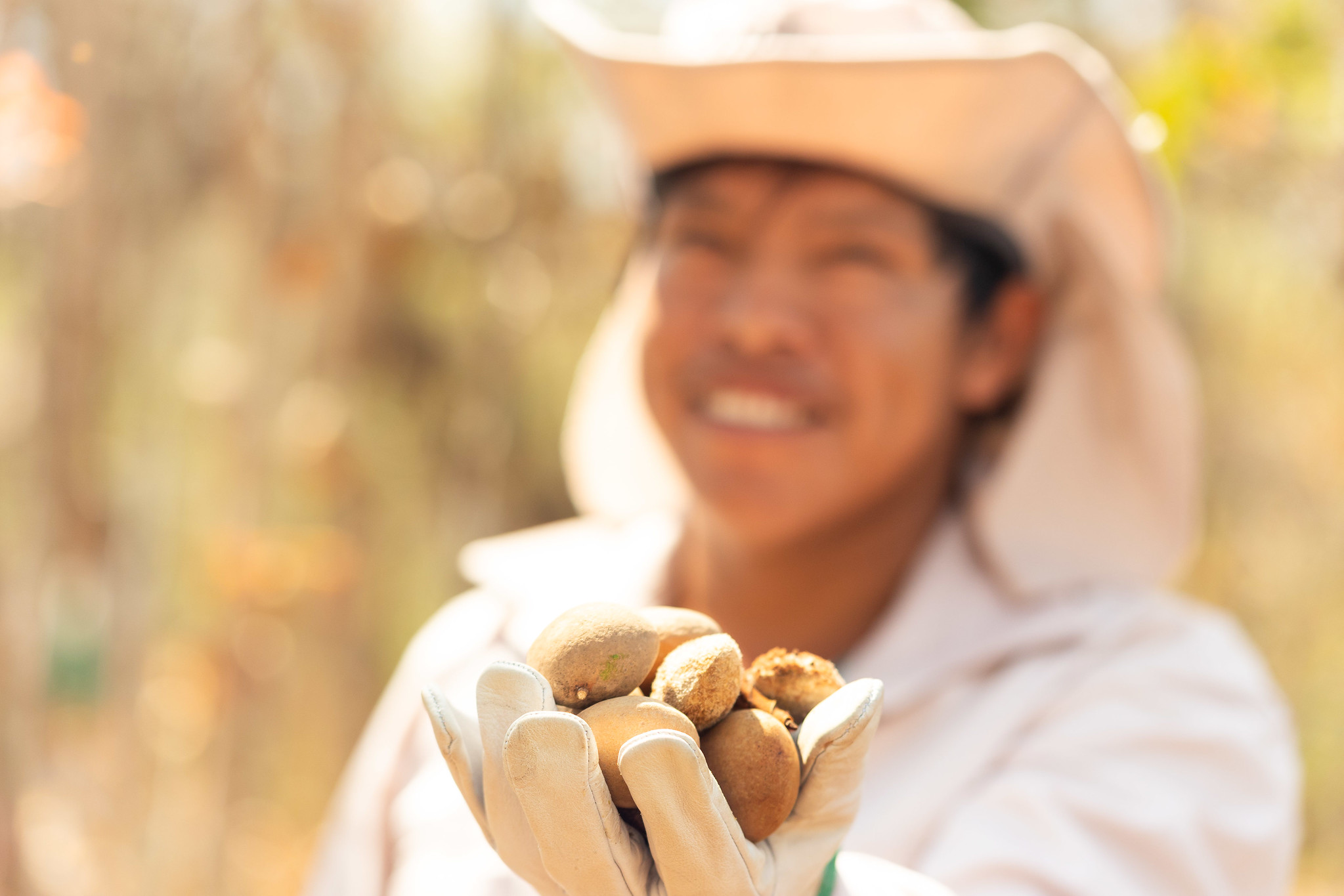The nókümonísh (almond in the Indigenous Chiquitana language) is one of the most traditional seeds of the Chiquitana region in Bolivia. Until recently, it was nothing more than a vague memory in the minds of older adults, with many local families unaware of the different ways in which this typical fruit of the forest can be used. Now, the chiquitana almond (Dipterix alata) is a product that has great economic potential for local communities, besides being a key element in the life cycles of local flora and fauna, as part of the regional ecosystem.

The pioneers of this newfound appreciation for nókümonísh are the families of the Indigenous community of San Ceferino, who have developed an initiative that contributes to the conservation of the Chiquitano forests and the sustainable use of this non-timber native forest species. Through a community governance exercise, these men and women decided to recover and revalue their way of life, turning this seed into a real alternative for improving their livelihoods.
Bolivia’s Chiquitano Dry Forests, located in the country’s lowlands east of the Andes, are part of the largest patch of healthy dry forest ecosystem today and one of the most biodiverse dry forests in the world, named after the Indigenous caretakers of the land, the Chiquitanos. Dry forests are the most endangered tropical forest in the world and the Chiquitano forest is under several threats due to recurring large-scale forest fires in the region in recent years, as well as increasing pressure from agricultural expansion.
Expanding on activities conducted under a previous project, these families participated in a project to promote the conservation and sustainable management of the Chiquitana almendra in San Ceferino, while respecting the natural balance of the forest ecosystem.




